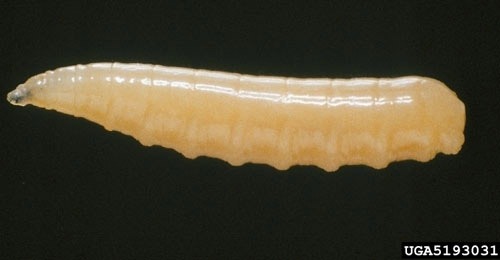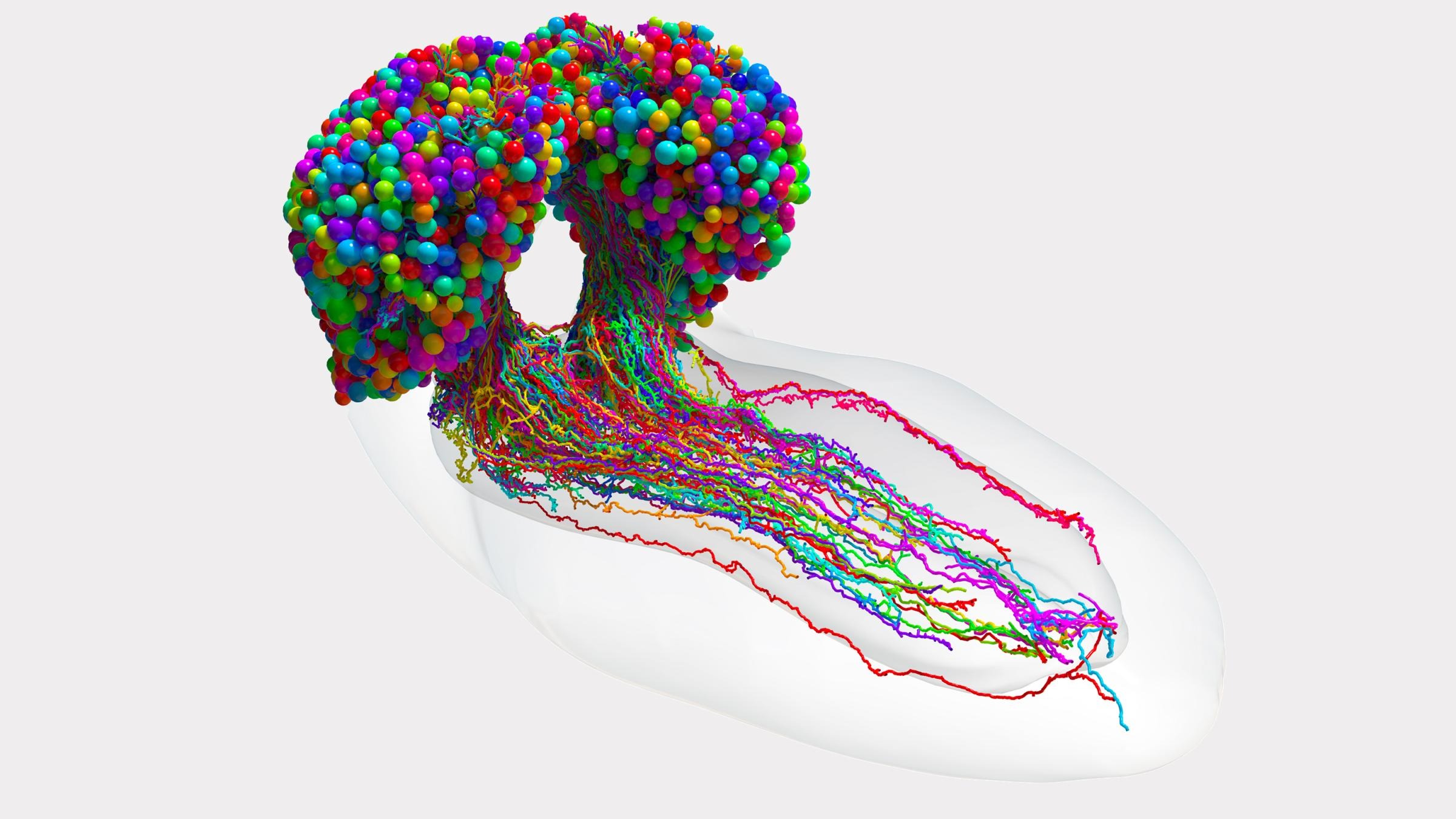
The fruit fly larva is no more than 10 mm long. Hence, it would be reasonable to assume that its brain, which is smaller than a poppy seed, is fairly simple. However, a recently-unveiled map of the insect's brain shows a surprisingly complex structure. It has 3,016 neurons connected by 548,000 synapses.
Created by a team from John Hopkins University and the University of Cambridge, it is the most advanced brain map to date. Until now, scientists have only made this sort of map, called a connectome, for the brains of three organisms. They include two types of worms. However, these animals' brains only had a few hundred neurons.
Mapping the tiny brain was no easy task. The team scanned thousands of slices of the organ using an electron microscope. They then painstakingly photographed each neuron. Imaging a single neuron required about a day. The final step was to map the over half million connections between them. The difficult endeavor took 12 years!

Human brains are far more complex than those of the fruit fly larva. But the researchers did find some similarities between the two. For example, both have areas devoted to learning, decision-making, and navigation. The fruit fly's brain also has two hemispheres. However, they both appear to serve a similar purpose. This is different from humans, where each side has specialized functions.
The researchers published the map in the journal Science on March 10, 2023. They hope to use it to gain further insights into the brain's decision-making and learning process.
"The new diagram is 'a reference map' that could help researchers better understand how the brains of animals work," Marta Zlatic, a neuroscientist at the University of Cambridge in England and study co-author, told Science News.
Resources: Smithsonian.com, Sciencenews.com, Gizmodo.com. Livescience.com
